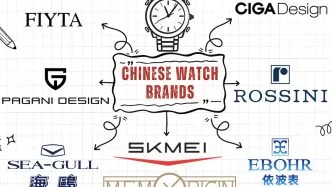The history of Japanese automobile companies dates back to the early 20th century. In 1907, Komanosuke Uchiyama, an engineer from Tokyo Motor Vehicle Works, built the first Japanese gasoline engine, the Takuri.
Several efforts and investments were made to further refine gasoline engines and vehicle structure design. During the 1930s, many Japanese car manufacturers emerged and began to experiment with new materials (like plastics) and new technologies (like hydraulic brakes and automatic transmissions).
In the mid-1950s, Japanese car companies started exporting vehicles to other countries. Toyota, for example, was the first brand to export its Toyopet Crown sedan to the United States in 1957.
Between the 1970s and 1990s, the automotive industry in Japan witnessed tremendous growth. Since Japanese cars had already gained popularity and significant market share in the United States and European countries, they were able to invest more in production facilities and research and development. This ultimately led to lower prices and higher sales volumes.
Since the 1970s, Japan has been among the top three countries in motor vehicle production. Their cars are famous across the world for several reasons, including.
- Fuel efficiency: Many Japanese vehicles contain lightweight engines to deliver impressive gas mileage
- Reliability: They are designed to withstand years of use with minimal maintenance
- Innovation: Japanese automobiles are often among the first to integrate new features like entertainment systems, hybrid engines, and advanced safety features.
- Customer services: They have gained a good reputation for being responsive and helpful. Big brands have a vast network across the world to offer excellent after-sales service.
These big brands are a major contributor to the Japanese economy — they employ millions of locals and generate billions of dollars in revenue every quarter. They also contribute to various sub-industries, such as materials and equipment supply, road transport, and sales and services.
Below, we have listed the top Japanese car brands that are at the forefront of technological innovation and leading the automobile sector.
Our listing criteria are based on the company’s popularity, annual revenue, number of car units sold, number of people employed, and expenditure on research and development. All cost figures have been converted into US dollars.
Did you know?
In 2024, Japan produced 8,234,681 motor vehicles, ranking as the third largest vehicle manufacturer after China and the USA. Around 4.22 million of these vehicles were exported.
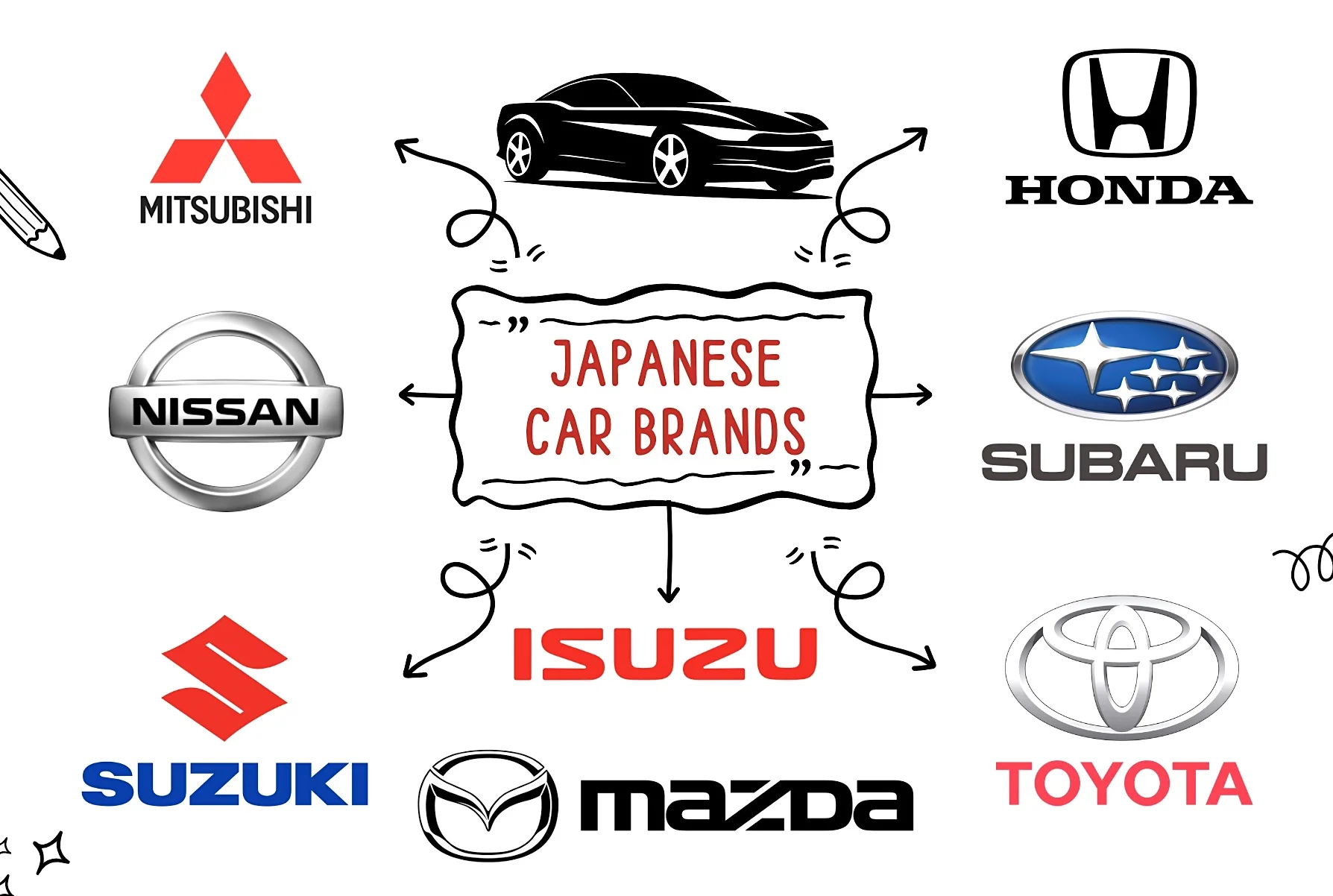
Table of Contents
12. Dome
Founded in 1975
Dome Corporation designs and manufactures racing cars for several motorsports disciplines, including open-wheel racing, touring car racing, and endurance racing. These cars are known for their high performance, innovative design, and advanced engineering.
Dome has years of experience in developing suspension systems, chassis, aerodynamic bodies, and other key components of racing cars. The company has been involved in notable racing series, including Super Formula, Super GT, the 24 Hours of Le Mans, and various domestic and international racing championships.
Their cars have won several championships in the GT500 class. Perhaps Dome’s most remarkable success was the 2002 Le Mans, when its Dome S101 prototype achieved a top-10 finish.
Besides manufacturing racing cars, Dome also undertakes various engineering projects, such as industrial and aerospace projects.
Did you know?
Dome Corporation was founded by Minoru Hayashi, a former employee of Yamaha Motor Company. He initially started it as a motorcycle components manufacturer, but later transitioned to motorsports and racing car construction.
11. Mitsuoka
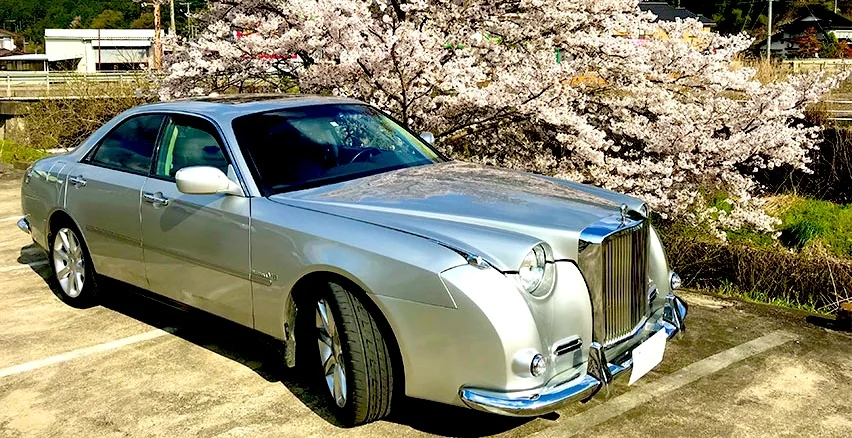 Mitsuoka Galue
Mitsuoka Galue
Founded in 1968
Mitsuoka is a privately held company owned by the Mitsuoka family. It specializes in manufacturing eccentric cars with retro designs. Most of its models are known for their unique styling that often incorporates American or British automotive design elements, giving them a nostalgic and classic appearance.
While the company builds a range of vehicles, from sports and convertibles to sedan cars, it has a relatively smaller production volume compared to other automobile companies. And its vehicles are usually considered boutique or niche models.
Some of its famous models include
- Orochi: a two-seater convertible sports car that features an aggressive design with sharp lines and unique styling cues
- Rock Star: a luxury sedan model that resembles the classic American muscle cars of the 1950s and 1960s.
- Galue: a sedan model that resembles British luxury cars like Bentley and Rolls-Royce
- Viewt: a retro-style compact car inspired by the Jaguar MK II
- Himiko: a convertible sports car featuring a long hood, round headlights, and a flowing body shape
At the Well-being Life Festa 2025 in Tokyo, Mitsuoka showcased its Viewt Story series, highlighting how its retro aesthetics are increasingly matched with modern ADAS and advanced safety systems
Did you know?
To date, Mitsuoka has shipped more than 12,000 vehicles, including 8,000 units of microcars (one-passenger cars) and 350 units of Mitsuoka Zero-1 (a sports car).
10. Aspark
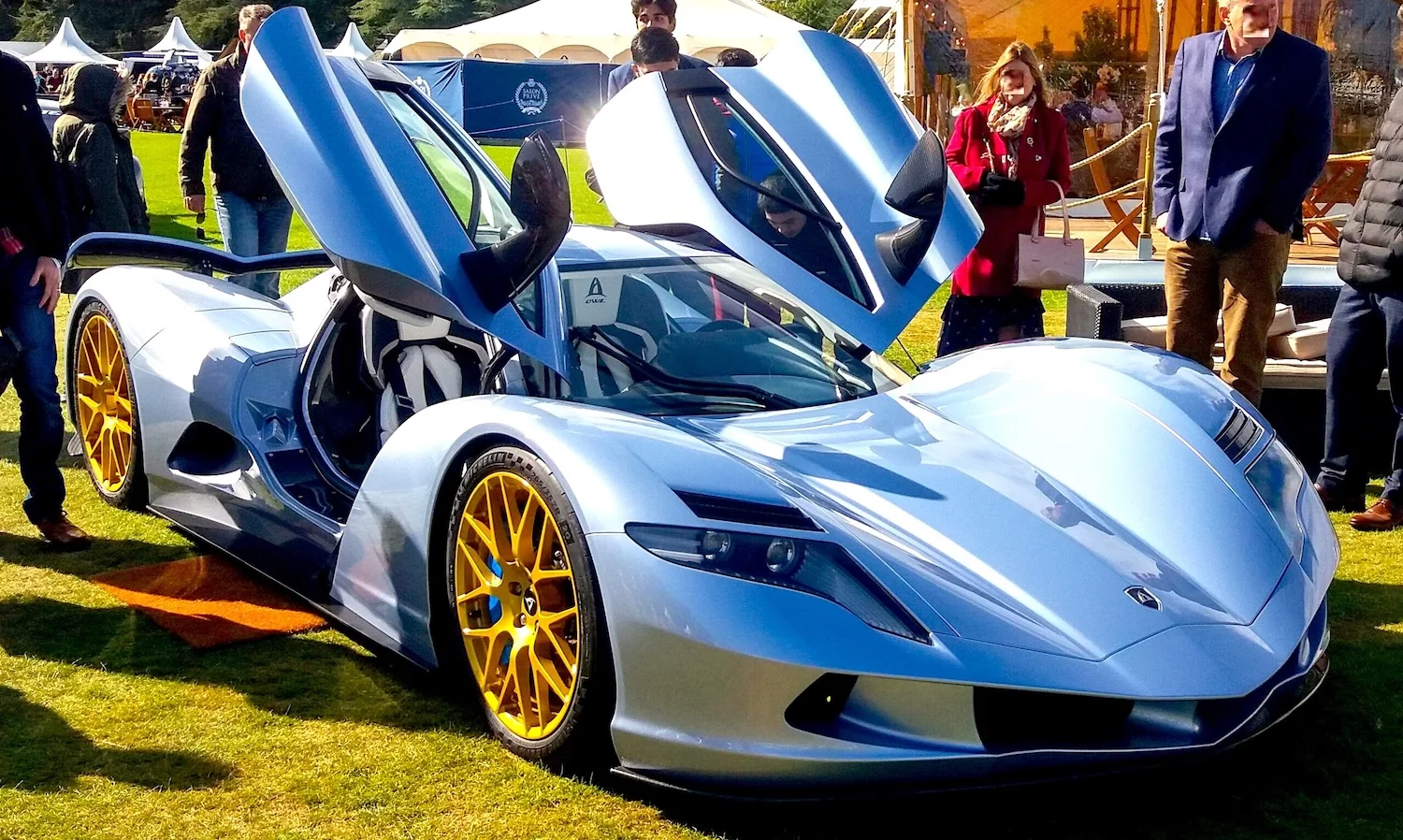 Aspark Owl
Aspark Owl
Founded in 2005
Number of Employees: 4,000+
Aspark focuses on developing cutting-edge electric cars with excellent performance and advanced technology. Its most significant achievement is Aspark Owl, an all-electric hypercar that claims to accelerate from 0 to 62 mph in 1.9 seconds and 0 to 186 mph in 10.6 seconds.
According to the company’s official website, it has over 30 offices worldwide, including locations in Japan, Switzerland, Thailand, and Indonesia. It employs about 4,000 people and has global sales in excess of $160 million.
In 2024, Aspark’s prototype Owl SP600 achieved a staggering 438.7 km/h at Germany’s Papenburg test track, making it one of the world’s fastest electric hypercars.
Did you know?
Aspark Owl is developed in a remarkably short timeframe. Its first prototype was introduced as a concept car in 2017, and the production version was unveiled in 2019. Owl’s estimated starting price is about $3.6 million, which makes it one of the most expensive production cars in the world.
9. GLM
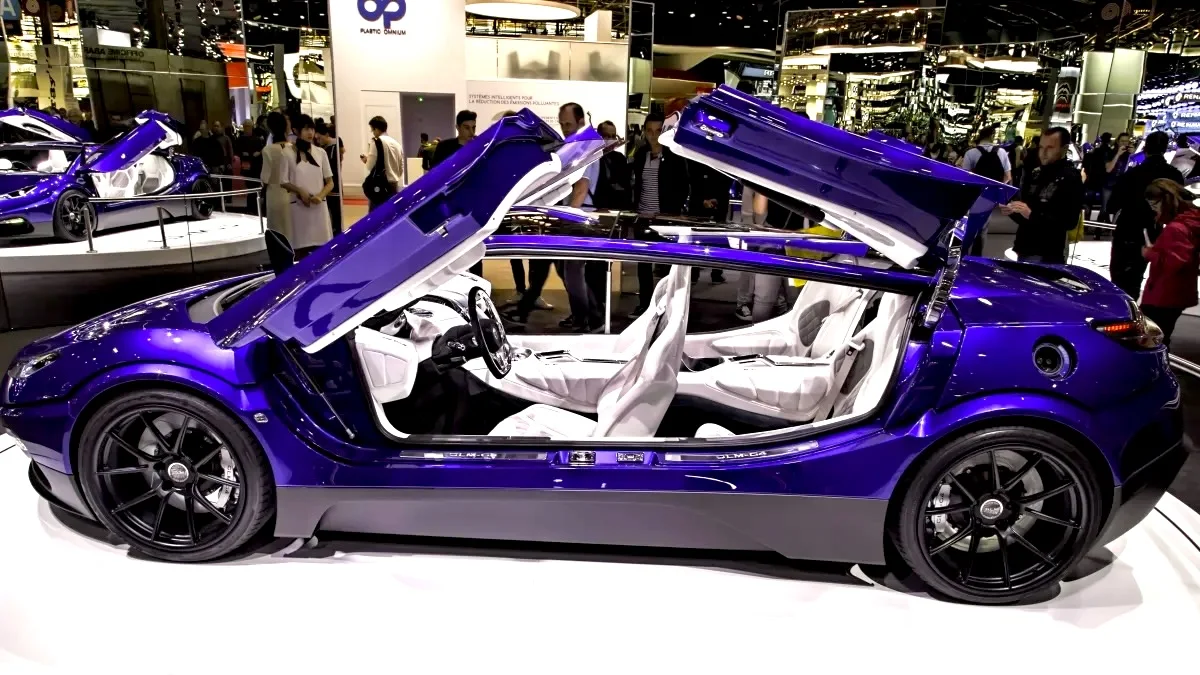
Founded in 2010
GLM is a relatively new car brand that focuses on developing electric sports cars and EV-related technologies. It mainly provides mass production and R&D support to domestic and international automakers, as well as technical and development support for automobile-related services, such as materials, chemicals, and components.
In recent years, the company has gained recognition for its unique design and high-performance electric sports cars. It has developed several production models and concept vehicles, showcasing expertise in EV technology.
One of their most notable achievements is the Tommykaira ZZ, a high-performance EV car with 305 horsepower and a top speed of 155 mph. The company has also collaborated with European car makers to produce GLM-G4, an electric supercar.
The G4 produces 500 horsepower and 1000 Nm torque that can be split between the front and rear wheels as per the driver’s preference. It goes from 0 to 60 miles per hour in 3.7 seconds and has a claimed range of 250 miles.
In 2024, GLM began co-developing and pre-selling an integrated sub-battery system with a parking cooler for in-vehicle use in partnership with Eberspächer-Mikuni Climate Control Systems.
In 2025, the company introduced a concept EV mobility vehicle for seniors, marketed as the “fun-to-ride” senior mobility concept car. It focuses on design that promotes independence and encourages regular use by older adults.
Did you know?
GLM was originally founded as ‘Green Lord Motors’ in 2010, but the company later changed its name to GLM to better reflect its focus on electric mobility and sustainable transportation.
8. Subaru
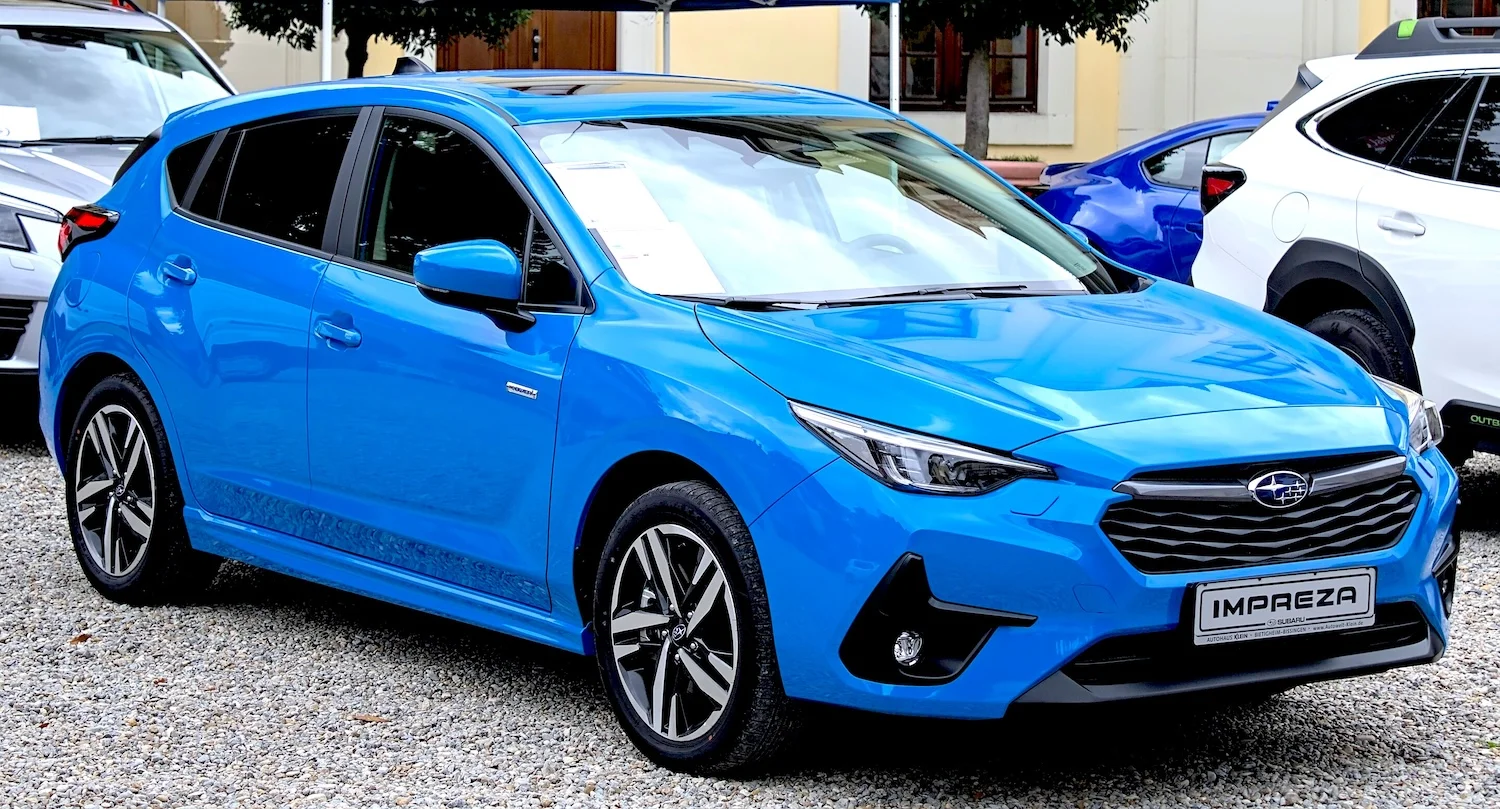 Subaru Impreza
Subaru Impreza
Founded in 1953
Annual Sales: 955,100+ units (FY 2024)
Annual Revenue: $26.5 billion+
Number of Employees: 36,900+
Subaru is a part of the larger conglomerate, Subaru Corporation, which also includes other businesses like industrial machinery, aerospace, and eco-technology.
What makes Subaru different from other car brands is its all-wheel drive technology. Almost all Subaru vehicles come with a standard all-wheel-drive system, which provides them with excellent traction and stability in various driving conditions. They perform well in ice, snow, and other challenging weather conditions.
Subaru vehicles use the boxer engine configuration, especially in cars above 1,500 CC. The combination of boxer engine layout, symmetrical all-wheel drive technology, and transmission balanced over the front axle provides optimal weight distribution with a low center of gravity.
Their most popular models include Levorg, Outback, Legacy, Impreza, and Forester. They also produce turbocharged versions of passenger cars, such as Outback XT, Forester XT, Legacy GT, and WRX.
In FY 2024, Subaru sold 955,100 vehicles worldwide. The Subaru Impreza was its best-selling model, with about 301,900 units sold globally. Of these, around 205,000 were sold in the US, the company’s largest market.
7. Isuzu
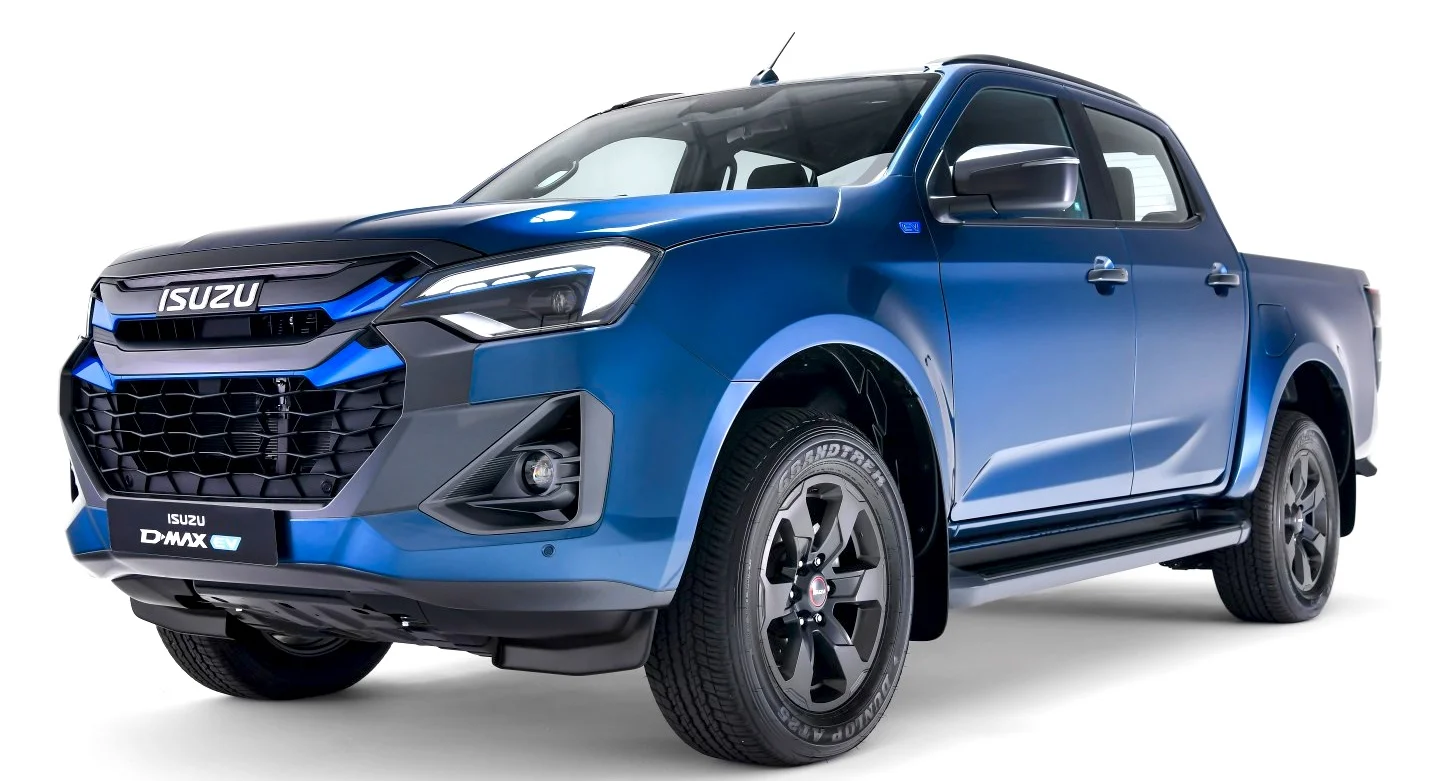 Isuzu D-Max
Isuzu D-Max
Founded in 1934
Annual Sales: 667,000+ units (2024)
Annual Revenue: $15.8 billion+
Number of Employees: 36,800+
Isuzu produces commercial vehicles (including SUVs, trucks, and buses) and diesel engines. Its commercial vehicles are tailored to suit the requirements of various industries such as transportation, agriculture, and construction.
Its diesel engines are used by many big automobile companies, including General Motors. More specifically, Isuzu has a joint venture with General Motors named DMAX, which builds diesel engines for GMC Canyon and Chevrolet Colorado pickup trucks.
To date, the company has produced more than 26 million engines worldwide, with tailored solutions for market-specific needs. It builds over 600,000 diesel engines per year, making it one of the world’s biggest diesel engine manufacturers.
Isuzu is also one of the world’s largest manufacturers of heavy-duty and medium-sized trucks, with a global market share of about 8%. It leads Thailand’s commercial vehicle industry and has a strong presence in Southeast Asia.
In 2024, the company invested $30 million in Gatik to support the rollout of commercial Level 4 autonomy by 2027, which includes developing safety-redundant chassis for middle-mile logistics.
In 2025, Isuzu began mass production of the D-Max EV, its first fully electric 1-ton pickup, at its Thailand plant. Built for European markets, this EV matches the diesel version’s towing capacity of 3.5 tonnes, has a payload of about 1,010 kg, and offers up to 263 km of WLTP range.
Did you know?
In 1961, Isuzu produced its first passenger car, the Bellel. It was named after the French word for ‘beautiful.’ This four-door sedan was designed to compete with other mid-sized personal vehicles of that time, such as the Nissan Bluebird and Toyota Crown.
6. Mazda
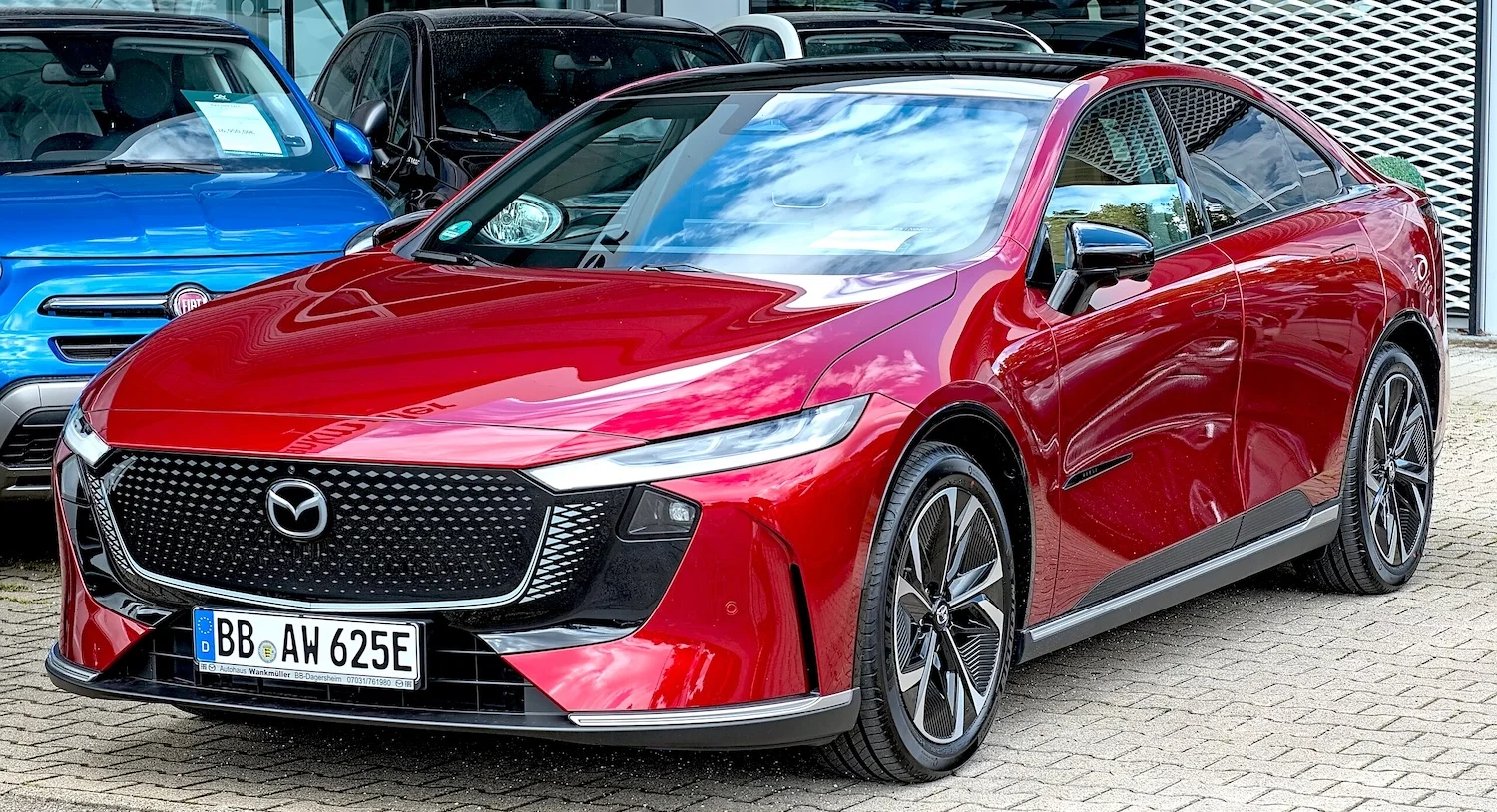 Mazda EZ-6
Mazda EZ-6
Founded in 1920
Annual Sales: 1,277,578 units (2024)
Annual Revenue: $33 billion+
Number of Employees: 48,700+
Headquartered in Hiroshima, Mazda is a leading Japanese multinational automotive company. Its biggest markets are the United States, China, and Japan.
While the company was founded in 1920, it didn’t produce its first vehicle until 1931, which was a small three-wheeled truck. From the 1930s to the 1950s, it manufactured many commercial vehicles and trucks. In 1960, the company introduced its first passenger car, the R360. It became an instant hit, allowing Mazda to compete with big players in the automotive industry.
Today, Mazda manufactures a wide range of vehicles characterized by their unique designs, performance, and sporty handling. Some of its most popular models include Mazda CX-5, MX-5 Miata, Mazda 6, Mazda 3, CX-9, and RX-8.
Mazda MX-5, in particular, is a popular two-seater sports car that has won several awards and accolades for its performance and dynamically balanced and minimally complex design.
Mazda is also a technology-focused company. It has introduced numerous innovative technologies in recent years. Mazda Co-pilot Concept, for example, is an advanced driving support technology that monitors drivers’ physical conditions to reduce potential risks. i-ACTIVSENSE is an active safety system that recognizes the external surroundings to minimize damage in scenarios where a crash cannot be avoided.
In 2024, the company delivered a total of 1,277,578 vehicles worldwide, a 2.6% increase from the previous year. In the US alone, they sold 424,379 vehicles.
In 2025, Mazda announced a $150 million investment in Thailand to produce compact electric SUVs for both domestic and ASEAN markets. The project targets an annual production capacity of about 100,000 units.
Did you know?
Mazda MX-5 is one of the best-selling two-seater sports cars of all time, with more than one million units sold worldwide since its inception in 1989. The reason behind its success is its design philosophy of ‘Jinba Ittai,’ which means ‘horse and rider as one’ in Japanese.
This philosophy emphasizes the connection between the driver and his car, and it has influenced many of the company’s design and engineering decisions over the past three decades.
5. Suzuki
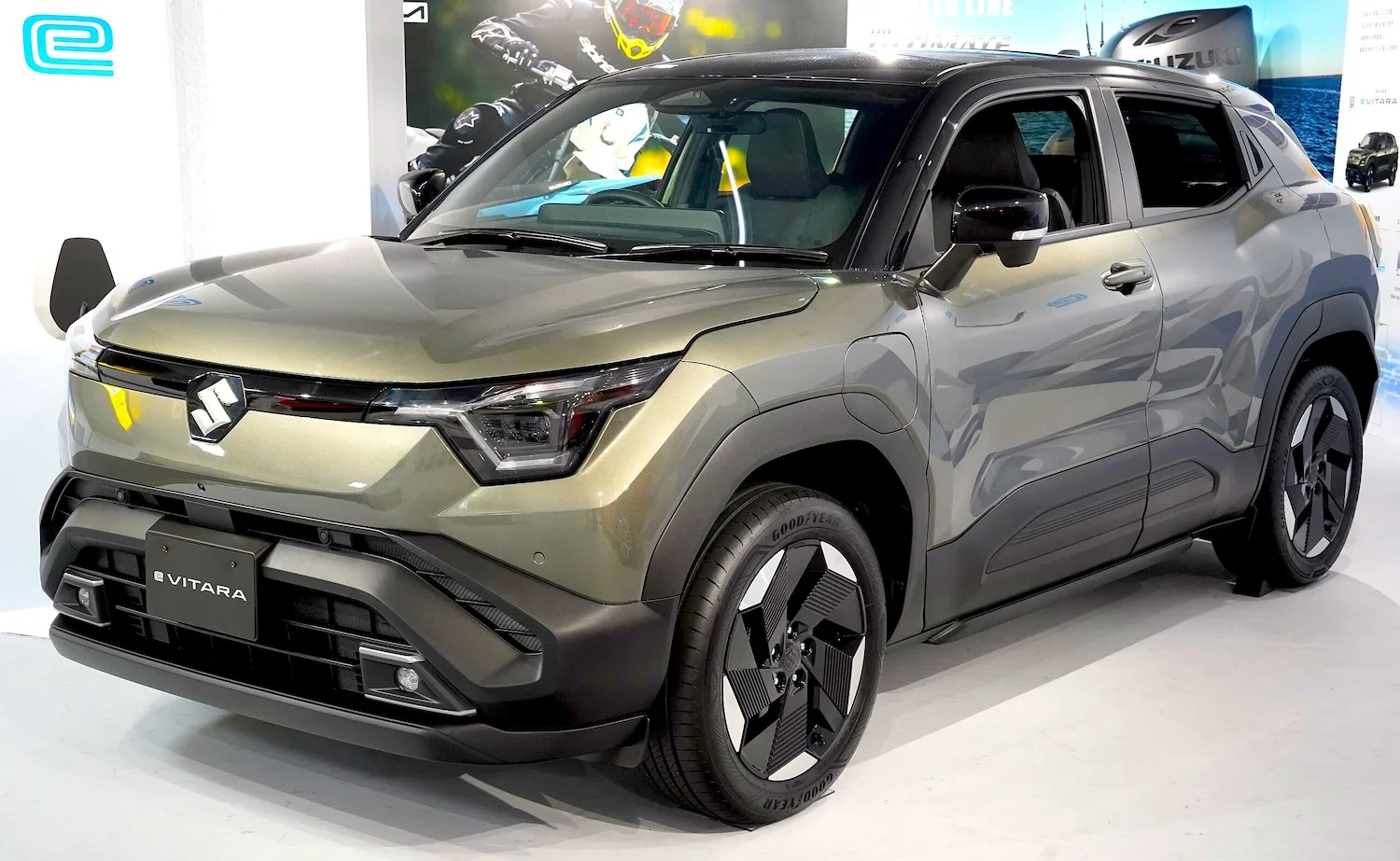 Suzuki e Vitara
Suzuki e Vitara
Founded in 1909
Global Production: 3,299,602 units (2024)
Annual Revenue: $37.3 billion+
Number of Employees: 70,000+
Suzuki produces automobiles, all-terrain vehicles, motorcycles, various small internal combustion engines, and outboard marine engines. Its vehicles are popular in many countries, especially in India, Japan, and Indonesia.
The company is well-known for manufacturing compact cars, such as the Swift, which are popular among the middle class due to their low maintenance and high fuel efficiency. It also manufactures SUVs, such as Jimny and Vitara, which are known for their durability and off-road capabilities.
While Suzuki operates in more than 180 countries, it has a strong presence in the Indian market. In India, Suzuki operates through a joint venture called Maruti Suzuki India Limited, which accounts for more than half of Suzuki’s global production.
Suzuki has partnered with Toyota and collaborated with big automakers, including Fiat and General Motors, to develop hybrid and electric vehicles.
It also has a long history in motorsports — Suzuki has participated in the MotoGP motorcycle racing championship, the World Rally Championship (with its Swift model), and the Isle of Man TT.
Suzuki’s Technology Strategy emphasizes lightweight, efficient, and sustainable mobility. Their key plan includes developing
- Lightweight vehicles using the HEARTECT platform with up to 100kg weight reduction
- Battery-lean EVs/HEVs, starting with the e-Vitara SUV
- Recyclable design with mono-materials and recycled plastics
Plus, the company is scaling up capacity in India, adding a third plant in Haryana, aiming for a total annual production capacity of 4 million units by 2030.
4. Mitsubishi Motors
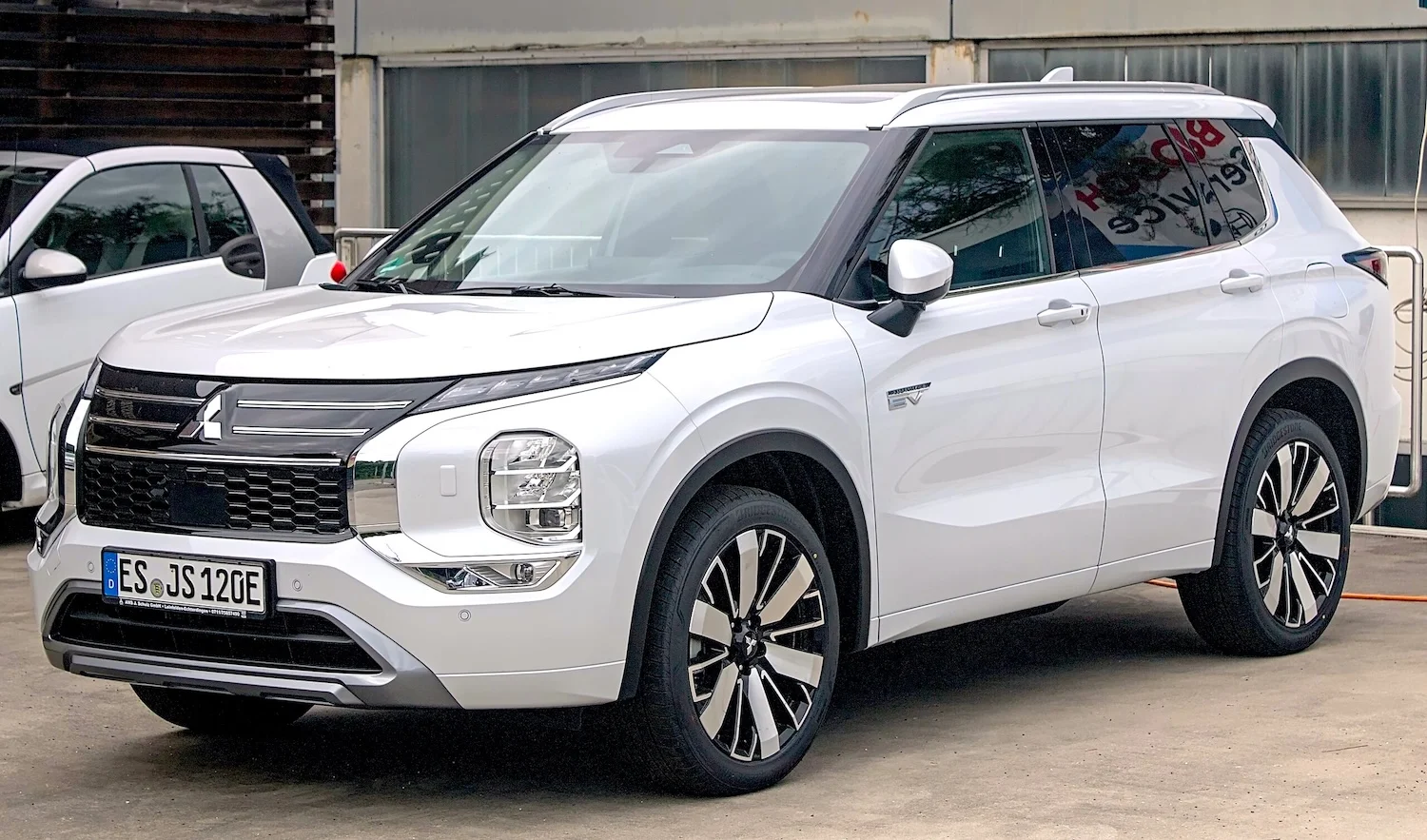 Mitsubishi Outlander
Mitsubishi Outlander
Founded in 1970
Annual Sales: 109,843 units (2024)
Annual Revenue: $19.3 billion+
Number of Employees: 62,000+
Mitsubishi Motors has a reputation for manufacturing vehicles that are both practical and fun to drive, with a focus on low emissions and better fuel efficiency.
Some of its most popular models include the Mirage hatchback, the Mirage G4 sedan, and the Outlander SUV. It also manufactures all-electric cars that are environmentally friendly and cost-efficient.
Mitsubishi has developed several unique car technologies, including
- Plug-in Hybrid Electric Vehicle (PHEV) technology: it utilizes a combination of gasoline and electric power to enhance fuel efficiency and minimize emissions
- Super-Select 4WD system: it allows drivers to switch between four-wheel and two-wheel drive modes on the fly.
- MIVEC Engine technology: it is a valve timing electronic control system that uses variable valve timing to improve power and fuel efficiency.
- Active Stability Control: It is a safety feature that uses multiple sensors to detect wheel slip or loss of traction. In such cases, it applies the brakes to individual wheels to provide better control and stability.
The company has received several awards for its safety features, including the Top Safety Pick+ award from the Insurance Institute for Highway Safety, one of the highest safety ratings an automobile company can receive.
Moreover, Mitsubishi has partnered with several other car brands over the years, including Volvo, Chrysler, and the PSA Group, to develop improved electric and hybrid vehicles.
In 2024, the company sold 109,843 vehicles, up 25.8% from the previous year. This marked its best sales performance since 2019, with every model in the Mitsubishi lineup showing growth. The Outlander, Outlander Plug-in Hybrid, and Eclipse Cross were the strongest performers.
In 2025, Mitsubishi signed an MOU with Foxtron (Foxconn’s EV unit), where Foxtron will develop and produce an EV in Taiwan for Mitsubishi, targeting the Australia and New Zealand markets.
Did you know?
The name Mitsubishi is derived from two Japanese words, ‘mitsu’ meaning ‘three’ and ‘hishi’ meaning ‘water chestnut.’ The three diamonds (or three rhombuses) in the logo symbolize reliability, integrity, and success.
3. Nissan
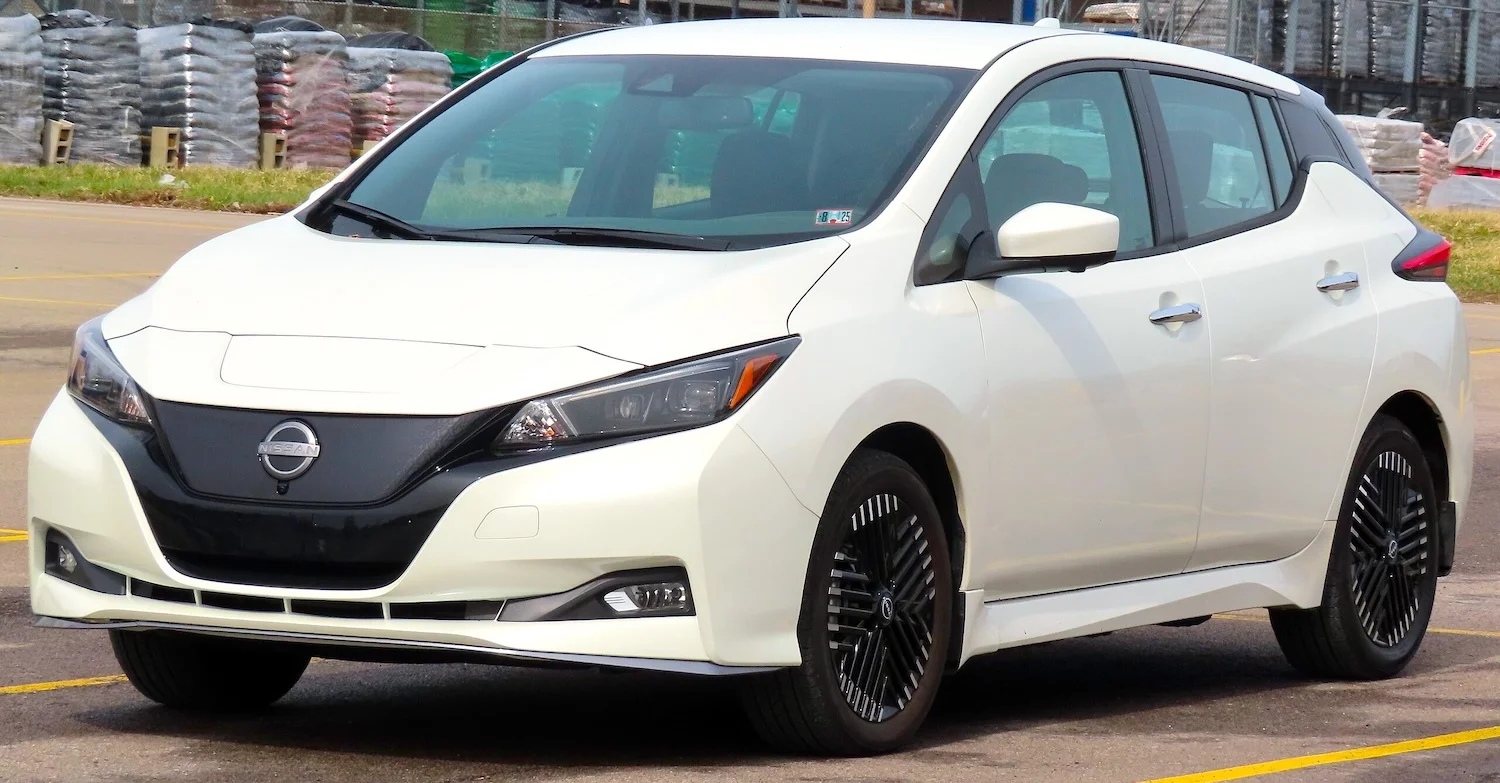 Nissan Leaf
Nissan Leaf
Founded in 1933
Annual Sales: 109,843 units (2024)
Annual Revenue: $63.7 billion+
Number of Employees: 131,000+
Nissan produces a broad range of vehicles, from compact cars to large SUVs and trucks. It is among the top 10 largest automobile manufacturers in the world and the leading Japanese car brand in China, the United States, Mexico, Canada, the United Kingdom, and Russia.
Its most popular models include Nissan Altima, Nissan Rogue, Nissan Maxima, Nissan Titan, and Nissan Pathfinder. It also sells the Nissan GT-R sports car, Nissan Frontier pickup truck, Nissan Leaf electric car, and many other hybrid models.
The Nissan Leaf, in particular, is the world’s first mass-produced electric car. Released in 2010, it has now become one of the top-selling electric cars worldwide. More than 650,000 Leaf units have been sold globally since its launch, just behind the Tesla Model 3.
In 2024, the company sold approximately 3.35 million vehicles, a flat sales performance compared to the previous year. In the US, they sold 924,008 units, a 2.8% increase from 2023.
Nissan is known for its commitment to sustainability and state-of-the-art technology. It aims to achieve carbon neutrality across its products’ lifecycle and operations by 2050.
It is investing billions in various electrification technologies, such as all-solid-state batteries and more efficient internal combustion engines. Through the Alliance 2030 roadmap (with Renault and Mitsubishi), Nissan plans mass production of all-solid-state batteries by mid-2028. These batteries promise double the energy density and one-third charging time, with targeted battery cost reductions.
The company is also pushing to 34 EV models by 2030, aiming for electric vehicles to make up 40% of its lineup by 2026 and 60% by 2030.
Did you know?
Nissan has developed an advanced autonomous drive technology called ProPILOT. It’s a combination of an accelerating, braking, and steering system that can operate in fully automatic mode, easing driver workload in long commutes and heavy highway traffic.
2. Honda

Founded in 1948
Annual Sales: 4.1 million+ units (2024)
Annual Revenue: $145.6 billion+
Number of Employees: 194,000+
Headquartered in Minato, Tokyo, Honda manufactures automobiles, motorcycles, and power equipment. It is the largest manufacturer of internal combustion engines by volume, building over 14 million internal combustion engines every year.
The company sells a wide range of cars, the most popular being
- Honda Civic — known for its sporty design and impressive fuel efficiency
- Honda Accord — a midsize sedan with a spacious interior and advanced safety features
- Honda Pilot — a midsize SUV with a seating capacity of eight people and a spacious cargo area
- Honda CR-V — a compact crossover SUV popular for its practicality and versatility
- Honda Odyssey — a minivan that features Lane Departure and Forward Collision Warning, CabinTalk, CabinWatch, and Magic Slide second-row seats.
Honda is the first Japanese car brand to open a manufacturing plant in the US. In 1983, Honda established a plant in Marysville, Ohio, to decrease trade tensions between the United States and Japan. In 1986, they launched the first Japanese luxury car brand, Acura, in the US. In 1999, Honda became the first automobile company to unveil a hybrid car in the US, the Honda Insight.
The company is developing advanced ADAS for its HEVs and EVs, especially in North America, Japan, and China, with Chinese models optimized using Momenta’s tech. It’s also introducing the “H Mark” badge on major HEVs starting in 2027.
Honda has set a goal of making all its products and operations carbon-neutral by 2050. They aim to increase the sales ratio of fuel cell cars and electric vehicles in developed nations to 40% by 2030, 80% by 2035, and 100% by 2040.
Did you know?
In 2008, Honda released a hydrogen fuel cell car named FCX Clarity. It was the first vehicle to be leased to retail customers and was highly praised for its zero emissions and quiet operation.
1. Toyota
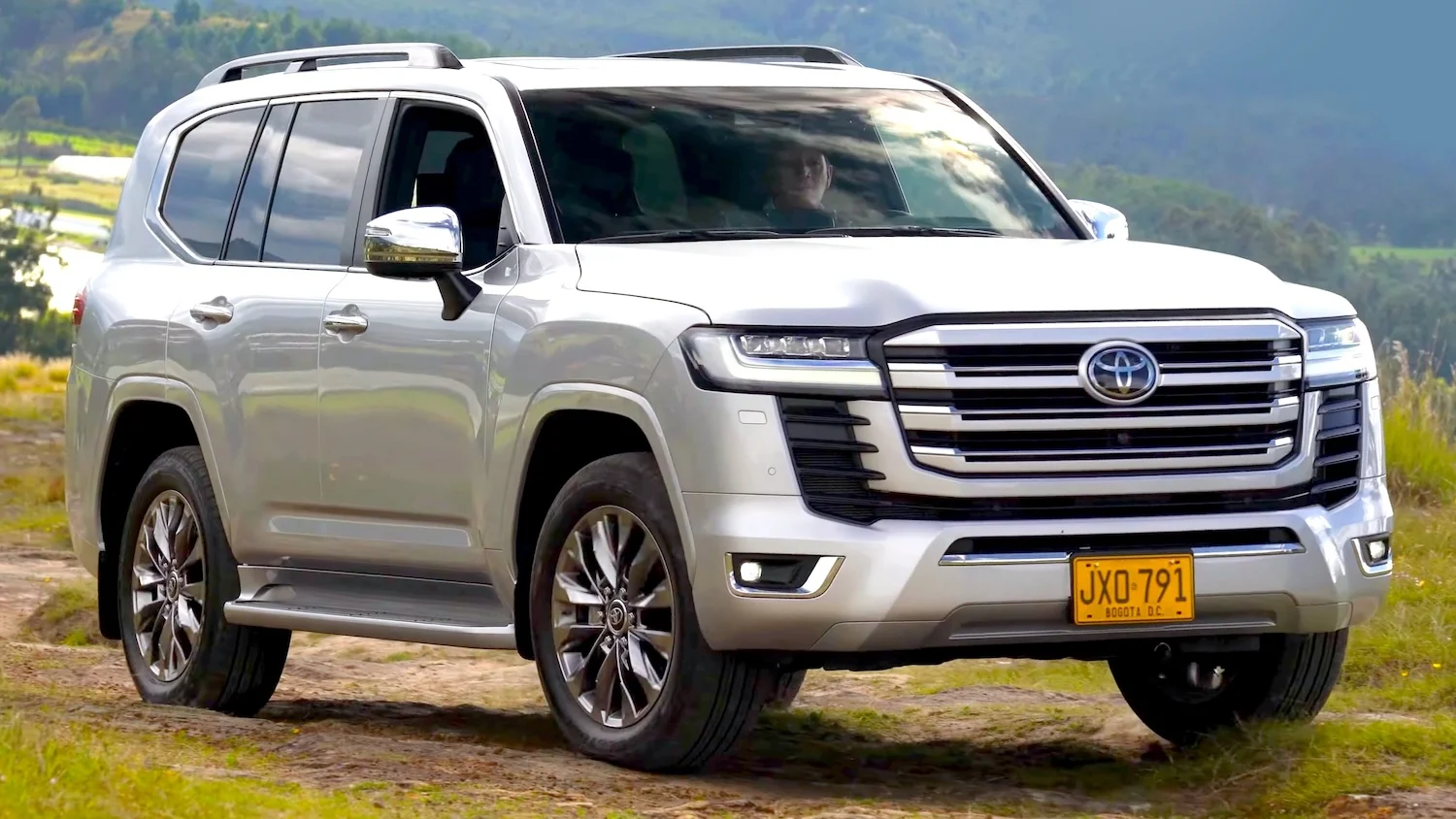 Toyota Land Cruiser
Toyota Land Cruiser
Founded in 1937
Annual Sales: 10.8 million+ units (2024)
Annual Revenue: $326.2 billion+
Number of Employees: 383,000+
In the 1950s and 1960s, Toyota took advantage of Japan’s rapidly growing economy to sell fuel-efficient cars to a growing middle class. In 1966, the company released the Corolla with a new 1100 cc K pushrod engine. It became an instant hit, allowing Toyota to expand its facilities in the international market.
In 2012, Toyota became the world’s first automobile company to build over 10 million vehicles per year. It is currently the largest automaker in Japan, the second largest in the United States (behind General Motors), and among the top 15 companies in the world by revenue.
The company sells its products under four brands:
- Lexus
- Hino
- Daihatsu, and
- the namesake Toyota
It has a strong presence in the US, with many manufacturing plants and Research and Development centers located there. In fact, its total vehicle production and sales in the US substantially impact the country’s economy.
According to the Center for Automotive Research, Toyota’s operations in the US (directly and indirectly) support more than 200,000 jobs and contribute over $35 billion to the country’s economy.
It has also been praised for developing more fuel-efficient hybrid electric cars in the 1990s. Toyota Prius, for example, is one of the most successful vehicles that combines an internal combustion engine with an electric motor. As of today, Toyota sells over 44 hybrid vehicle models worldwide.
In 2024, Toyota Group sold about 10.8 million vehicles worldwide, remaining the world’s top-selling automaker for the fifth year in a row, despite a 3.7% decline in global sales from the previous year.
In 2025, Toyota announced a $792 million investment to expand its Kolín plant in the Czech Republic to produce its first fully electric model in Europe.
The company plans to independently develop about 15 fully-electric models by 2027, targeting an annual production of approximately 1 million EVs globally to diversify beyond its current hybrid-heavy lineup.
Did you know?
Toyota’s logo features three ovals in a horizontally symmetrical configuration. The two ovals inside the larger one symbolize the heart of the customer and the heart of the company. The large oval represents the world that embraces Toyota. The empty background in the logo represents the company’s values: excellent quality, safety, innovation, and environment & social responsibility.
More to Know
What kind of technology and innovation do Japanese vehicles have?
Japanese automakers have developed advanced technologies to improve the safety, performance, and comfort of their cars. The most prominent tech and features include
Autonomous driving: It utilizes a range of software and hardware to automate various aspects of driving, minimizing accidents caused by human errors and maximizing passenger comfort. Honda, for instance, has developed a proprietary driver assistance system called Honda Sensing. Toyota has built its own Safety Sense suite that features lane departure warning systems and adaptive cruise control.
Autonomous Emergency Braking: This safety feature identifies potential collision scenarios and automatically applies the brakes to prevent or mitigate the impact of a collision. Mazda and Subaru have developed such safety systems that accurately react to various types of obstacles, including pedestrians, animals, vehicles, and objects.
Hybrid and Electric Vehicles: Japanese companies continue to innovate and invest in R&D to enhance the performance and efficiency of green vehicles. Toyota Prius, Honda Clarity, Nissan Leaf, and the Mitsubishi Outlander PHEV are well-known electric and hybrid vehicles that have the potential to decrease greenhouse gases and improve air quality significantly.
Fuel Cell Technology: While many fuel-efficient and ultra-efficient cars are already mass-produced, hydrogen-powered vehicles are expected to be the next big thing in the transportation sector. Japanese automakers have been working on hydrogen fuel cell technology since the early 1990s, which is projected to reach a market size of over $43.2 billion by 2031, growing at a CAGR of 45.5%.
Toyota Mirai, Honda Clarity Fuel Cell, Nissan X-Trail Fuel Cell Vehicle, and Mitsubishi Fuso Canter E-CELL are some popular examples of hydrogen-fueled vehicles.
Japanese Cars vs. European Cars
While European car brands like Audi, Mercedes-Benz, and BMW are often associated with luxury and high-performance vehicles, Japanese car brands prioritize practicality, efficiency, and reliability.
The difference is in the type of vehicle they manufacture. European automobile companies build luxury sedans, SUVs, and high-end sports cars. In contrast, Japanese companies build a range of vehicles, from economy cars to compact SUVs and family sedans.
What’s the best-selling Japanese car of all time?
Toyota Corolla is the best-selling Japanese car of all time, with more than 51 million units sold worldwide since its introduction in 1966. There have been twelve generations of Corolla; each has seen significant improvements in terms of design, performance, and features.
The latest generation, introduced in 2018, remains a popular choice among car buyers worldwide.
What’s the most expensive Japanese vehicle ever sold?
The Toyota 2000GT (tuned by Carroll Shelby) is the most expensive Japanese car ever sold at auction. On March 5th, 2022, one of the three Toyota-Shelby 2000GTs was sold for $2,535,000 at Gooding & Company’s Amelia Island auction.
Japan automotive aftermarket market
According to the GrandViewResearch report, Japan’s automotive aftermarket market is expected to surpass $31 billion by 2030, growing at a CAGR of 4.8%. Among replacement parts, turbochargers are the most profitable segment and are projected to grow the fastest during this period.
Read More


